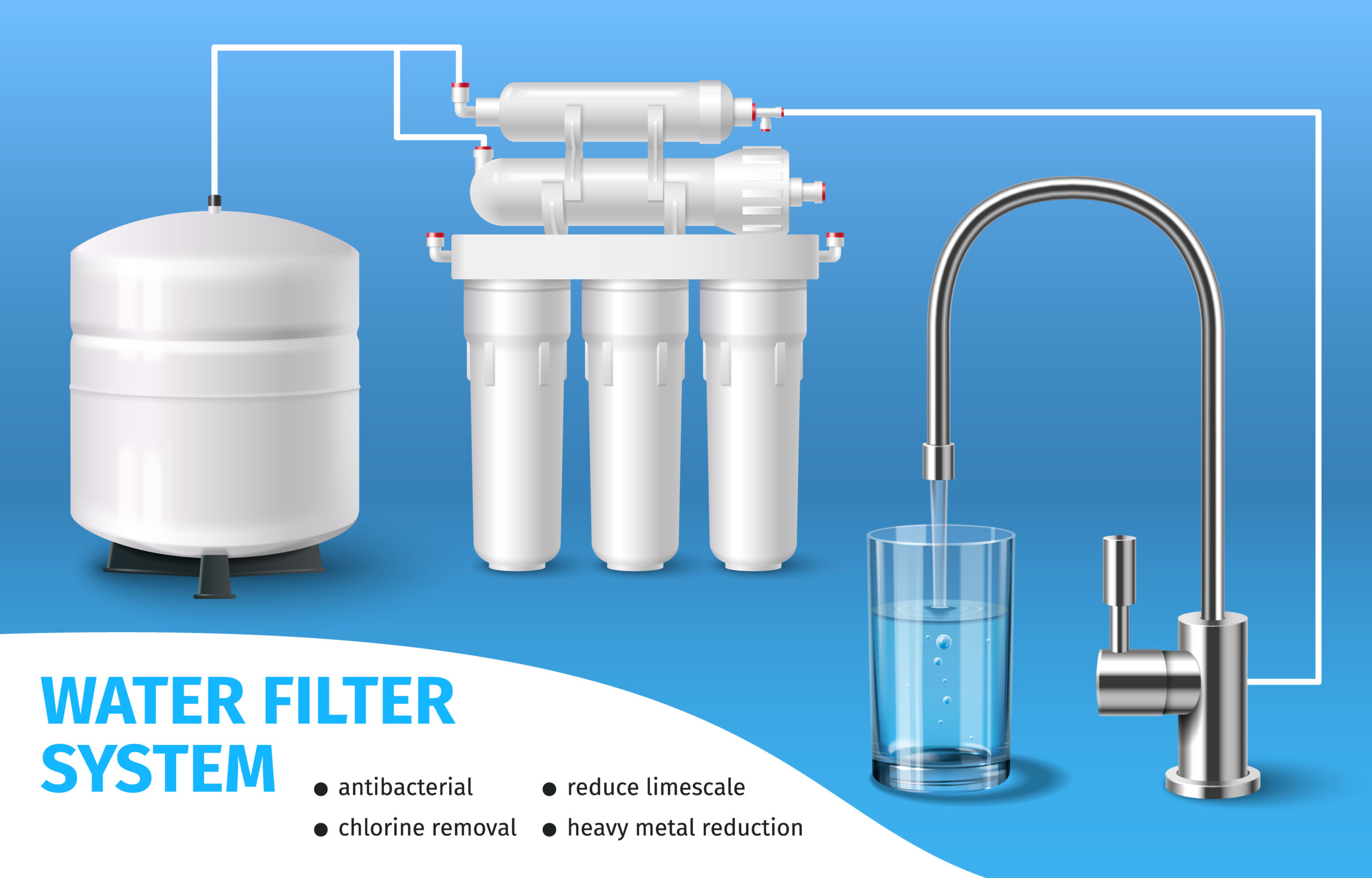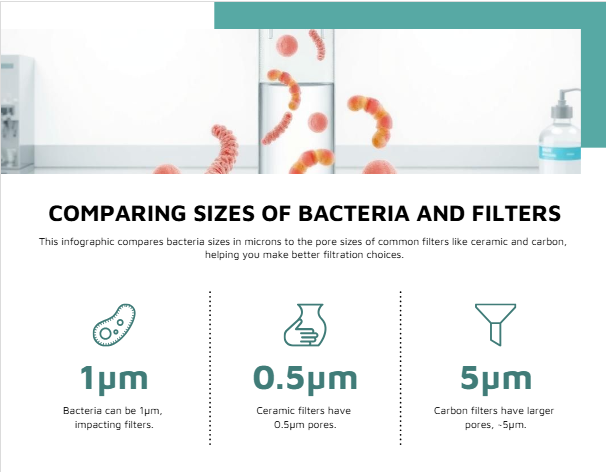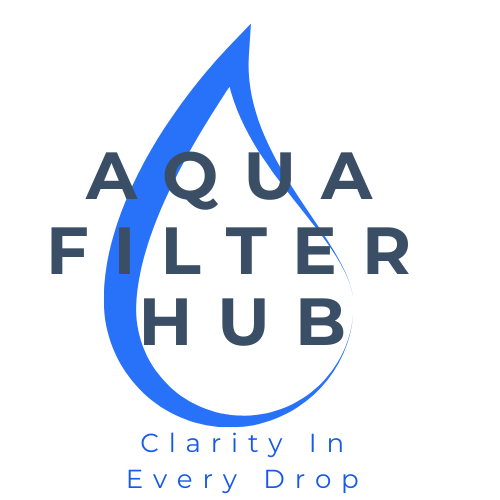Introduction
When I first started thinking about water quality in my home, one question kept popping up: Do whole house water filters remove bacteria? Like many homeowners, I was curious if these systems could provide the safety and clarity I craved. If you’ve ever wondered the same, you’re in the right place.
In this guide, I share my personal journey into water filtration, answer common questions, and explain the various technologies—from ceramic filters to UV treatment—that help keep our water safe. For more comprehensive details on water filtration systems, check out our Complete Guide to Whole House Water Filter Systems.

How Do Whole House Water Filters Remove Bacteria from Drinking Water?
Whole house water filters work at the point of entry—before water reaches any faucet—to remove contaminants. While many people assume that these systems only improve taste and odor, they can also target bacteria when designed with advanced media. Here’s a quick breakdown of how they work:
Filtration Media:
- Some filters use ceramic cartridges with intricate, small pore structures (often rated at 0.5 microns or less) that physically trap bacteria like E. coli, Campylobacter, and Giardia.
- Others combine activated carbon with specialized media (for example, the Aragon Plus cartridge, which is certified for microbial reduction by reputable institutes cdc.gov).
UV Treatment:
- Ultraviolet (UV) systems work differently by destroying bacteria’s DNA.
- When used in conjunction with pre-filtration, UV treatment is especially effective for private water supplies.
Chlorine Residual:
- Municipal water is typically disinfected with chlorine—a method that helps control bacterial growth.
- However, when a whole house filter (especially one with activated carbon) removes chlorine, there’s a discussion to be had about potential bacterial regrowth in plumbing.
- Research and expert opinions suggest that the positive water pressure and occasional bypass (allowing chlorinated water through) help keep bacteria in check.
The Chlorine Removal Debate
While activated carbon filters improve water taste by removing chlorine, some worry that this may diminish residual disinfection. In reality, proper system design—including intermittent bypasses or periodic flushes—ensures that even without continuous chlorine, bacterial regrowth is kept to a minimum.
For a more in‑depth discussion, see our dedicated post: Whole House Water Filters for Chlorine Removal

Below is a detailed comparison table summarizing these methods:
| Filter Type | Micron Rating | Mechanism | Effective Against |
|---|---|---|---|
| Ceramic Filters | 0.1 – 0.5 μm | Physically trap bacteria with small pore sizes; some are enhanced with silver. | E. coli, Giardia, Cryptosporidium |
| Aragon Plus | ~0.1 μm | Uses a combination of mechanical and electrokinetic filtration to trap pathogens. | Broad range of bacteria, even some viruses |
| UV Systems | N/A | Destroys bacteria by disrupting DNA, ideal as a secondary treatment. | Most bacteria and viruses (in clear water) |
| Carbon Filters | 0.5 – 5 μm | Removes chlorine, but not designed to catch bacteria on their own. | Typically used as part of a multi-stage system |
In-Depth Analysis of Micron Ratings and Filtration Efficiency
Understanding the science behind filter ratings is crucial for selecting the right system. Here’s an expanded look at micron ratings and what they mean for your water quality:
- Micron Ratings Explained:
- Micron (μm) is a unit that measures the size of particles. Filters with lower micron ratings are capable of capturing smaller contaminants.
- For example:
- E. coli typically measures between 0.5–2 μm.
- Giardia cysts can be in the range of 8–12 μm.
- Cryptosporidium oocysts are about 4–6 μm.
- Research-Backed Performance:
Studies from organizations like the Water Research Foundation show that filters with submicron capabilities (e.g., 0.1–0.5 μm in ceramic filters) provide superior protection against microbial contaminants. Incorporating these ratings into your decision-making process helps ensure that your chosen system meets both regulatory standards and household needs. - Why It Matters:
The finer the filtration (lower micron rating), the more effective your system is at removing even the smallest bacteria. However, extremely low ratings might also affect water flow. Balancing efficiency and usability is key to a successful installation.
Cost Considerations & Installation Challenges
Choosing the right filtration system isn’t just about performance—it’s also about fit and cost. While advanced options like the Aragon Plus or UV systems have higher upfront costs, their long-term benefits (reduced health risks and maintenance needs) often justify the investment. Remember to consider both DIY installation and professional setup, as well as compatibility with your existing plumbing.
For more details on installation costs and potential challenges, check out our in‑depth guide: How Much Does a Whole House Water Filter Installation Cost
Understanding Bacterial Contaminants in Your Water
When we talk about bacteria in water, it’s not a one-size-fits-all situation. Different types of bacteria come with varying risks, including:
- E. coli: Commonly found if fecal contamination occurs.
- Campylobacter: Often present in surface water and can lead to severe gastrointestinal issues.
- Giardia and Cryptosporidium: Although technically protozoa, these are grouped with bacteria due to similar filtration needs.
- Legionella: Responsible for Legionnaires’ disease, particularly a concern in systems like showers.
Health & Safety Considerations When Evaluating Water Quality
Ensuring the safety of your water goes beyond just removing contaminants—it directly affects your family’s well-being. Here are some key points to consider:
- Waterborne Illnesses:
Bacteria such as E. coli, Campylobacter, and Legionella can cause severe illnesses ranging from gastrointestinal distress to more serious infections. The CDC reports that waterborne diseases remain a leading cause of health issues in communities with untreated or poorly filtered water. Learn more at CDC. - Vulnerable Populations:
Young children, the elderly, and immunocompromised individuals are more susceptible to infections caused by microbial contaminants. Ensuring that your water filter effectively targets these pathogens is essential for protecting the most vulnerable in your household. - Preventative Testing:
Regular water testing—especially for homes using well water—can catch potential issues early. Consider investing in home testing kits or professional testing services recommended by the EPA. EPA Water Testing Guidelines
Including these considerations in your decision-making process not only helps you choose the right system but also underscores why reliable filtration is essential for health and safety.
How Does Bacterial Filtration Differ for City Water and Well Water?
What Are the Bacterial Challenges in City Water?
City water is generally disinfected with chlorine and chloramines before reaching your tap. This residual disinfectant limits bacterial growth, meaning that even after passing through a whole house filter, the risk of harmful bacteria is low. However, filters still add value by removing other contaminants like VOCs, pesticides, and bad tastes.
What Are the Bacterial Challenges in Well Water?
Well water, on the other hand, isn’t always treated to the same extent.
- Bacterial loads can be unpredictable.
- Contaminants like iron or manganese can foster biofilm growth in the pipes.
In these cases, systems designed for well water might incorporate specialized cartridges or UV systems to ensure comprehensive microbial reduction. Testing your well water regularly—and choosing a filter system tailored to its unique challenges—is essential.
According to the EPA, microbial contaminants like E. coli are a leading cause of waterborne illness in private water supplies. That’s why filters like the Aragon Plus, certified by the Institute Pasteur, are trusted for bacterial defense.
In a Consumer Reports test from 2023, ceramic and UV-based whole house systems outperformed carbon filters for bacterial protection.
How Do Different Filter Types Work at the Microscopic Level?
Understanding the science behind filtration helps explain why certain systems are more effective against bacteria:
- Ceramic Filters:
These filters have pores typically around 0.5 microns or smaller, which means they can physically trap bacteria such as E. coli (usually around 0.5–2 microns in size). The structure of ceramic media creates a maze that bacteria cannot navigate. - Activated Carbon Filters:
While excellent at removing chemicals and chlorine, activated carbon filters alone might not capture very small bacteria unless combined with other media. This is why advanced systems pair carbon with KDF or ceramic elements. - UV Systems:
Instead of physically filtering out bacteria, UV systems deactivate them by breaking down their DNA. For example, UV units operating at 254 nm are proven to deactivate over 99.9% of common pathogens, as long as the water is clear enough to allow effective UV penetration.

The CDC reports that private well users account for the majority of waterborne bacterial outbreaks in U.S. homes. Most of these could have been prevented with a proper filtration system.
FAQs
Q: Do whole house water filters remove bacteria?
A: Yes, systems designed with submicron or UV technology remove or neutralize bacteria like E. coli and Giardia.
cdc.gov.
Q: What is the best whole house filter for bacteria removal?
A: Filters like the Aragon Plus and Pearl TBC have certifications that confirm their efficiency in bacterial reduction.
Q: Does removing chlorine increase the risk of bacteria in pipes?
A: Not necessarily. Although chlorine provides residual disinfection, proper systems often include methods to flush or bypass to maintain safety.
Summary
| FAQ | Key Answer |
|---|---|
| Effectiveness | Advanced systems remove bacteria; check for certifications. |
| Best Types | Ceramic, UV, and specialized bacterial cartridges. |
| Bacterial Growth in Pipes | Unlikely if water is properly disinfected before reaching home. |
| Cartridge Replacement Frequency | Typically every 6–12 months. |
Additional FAQ Section – Secondary Questions
Q1. How often should I replace my filter cartridge?
A: Most whole house filters recommend replacing filter cartridges every 6–12 months. However, the exact frequency depends on water usage, the quality of your water, and manufacturer guidelines. For a deeper dive into filter upkeep, please see our guide on Whole House Water Filter Maintenance: What You Need to Know.
Q2. Will installing a whole house water filter affect my water pressure?
A: Properly installed and maintained systems should not significantly impact water pressure. If you experience reduced pressure, it might be due to clogged filters or mismatched system flow rates. Regular maintenance and the right product for your home’s water demands can help prevent this.
Q3. How do I know if the filter system is compatible with my plumbing?
A: Compatibility depends on your home’s connection types, sizes, and your system’s design. Check product specifications and consult your plumbing diagram or a professional installer if you’re unsure. Reading customer reviews and Q&A on the product pages can also provide useful insights.
Q4. What if I have concerns about chlorine removal affecting bacterial regrowth?
A: Although activated carbon filters remove chlorine—which can help control bacteria—proper system design, such as intermittent bypass or periodic flushing, minimizes any risk of bacterial regrowth. For a comprehensive discussion, visit our dedicated post on Whole House Water Filters for Chlorine Removal.
Product Recommendations: Top Picks for Bacterial Filtration
For those looking to ensure their whole house system tackles bacteria effectively, here are a few recommendations:
| Product | Key Features | Ideal For |
|---|---|---|
| Aragon Plus Cartridge Filter | Specially designed for bacteria removal; certified for microbial reduction. | Well water & tank water applications |
| Doulton Ceramic Cartridge Filters | Uses small, complex pore structures for effective physical barrier against bacteria. | Municipal and well water |
| UV Water Treatment Systems | Uses ultraviolet light to destroy bacteria’s DNA; best when combined with pre-filtration. | Private water supplies |
Are All Bacteria the Same Size?
Not exactly. Knowing the size of common contaminants helps explain why certain filters work better than others:
- E. coli: Approximately 0.5–2 μm
- Giardia: Approximately 8–12 μm
- Cryptosporidium: Approximately 4–6 μm
This is why filters with submicron capabilities—like ceramic and specialized cartridges—offer greater protection against bacteria.
Addressing Chlorine Removal Concerns
A common misconception is that removing chlorine from water with a carbon filter can lead to bacterial regrowth in your pipes. While chlorine does act as a final disinfection step, it’s important to note that:
- Most harmful bacteria are already neutralized before reaching your home.
- If you’re concerned, some systems allow for intermittent bypass or flushing with chlorinated water to “reset” your pipes.
Studies by organizations such as NSF International have shown that with proper maintenance and flushing, the risk of regrowth is very low.
Personal Insights and Technical Details
After years of researching water filtration, I’ve learned that true safety comes from understanding the technical details. Here are some key insights:
- Micron Ratings Matter:
For example, filters with ratings of 0.5 microns or less are effective at trapping bacteria such as E. coli (which typically measures between 0.5 and 2 microns) and Giardia. - Maintenance is Key:
Regular filter cartridge replacement (every 6–12 months) not only ensures efficient bacterial removal but also minimizes the chance for biofilm formation inside the filter. - Chlorine and Bacterial Growth:
Data-backed studies show that while carbon filters remove chlorine, the positive water pressure in plumbing and occasional bypass of the filter help maintain residual disinfection. This prevents significant bacterial regrowth.
Maintenance, Lifespan, and Compatibility
Maintaining your water filter is key to ensuring optimal performance. Most systems recommend replacing filter cartridges every 6–12 months, although the exact lifespan can vary based on water usage and source quality. Regular inspections and routine cleaning, especially for ceramic filters, help prevent biofilm build-up. Also, ensure your chosen system is compatible with your home’s plumbing to avoid leaks and inefficiencies.
For a deeper dive into upkeep and expectations, read our detailed post: Whole House Water Filter Maintenance: What You Need to Know.
Clear Action Steps for a Safer Water System
If your water test shows the presence of bacteria (such as coliforms or E. coli), follow this straightforward plan:
- Stop Using the Water for Drinking:
Immediately cease using the water until the issue is resolved. - Select a Certified Filtration System:
Choose a system designed for bacterial reduction, such as those featuring the Aragon Plus cartridge or UV treatment. Certification from reputable bodies (e.g., Institut Pasteur, NSF International) is key. - Flush Your Plumbing:
Consider periodically bypassing your filter or flushing your plumbing with chlorinated water. This helps clear any biofilm that might have formed and maintains residual disinfection. - Monitor and Retest:
After installing your new system, regularly monitor your water quality and retest to ensure that bacteria are being effectively removed.
Water Testing Protocols and a Composite Case Study
Ensuring your filtration system works effectively starts with robust water testing. Here’s a simple protocol and a real-world example to guide you:
Water Testing Protocol:
- Pre-Installation Testing:
- Use a certified home water testing kit or hire a professional to measure key parameters: bacteria counts, turbidity, and chlorine levels.
- Record baseline readings to understand your water’s initial condition.
- System Installation:
- Install your chosen filter system according to manufacturer guidelines.
- Ensure correct setup, especially for systems requiring UV treatment or multiple stages.
- Post-Installation Testing:
- Retest your water 1-2 weeks after installation.
- Compare new readings against the baseline to verify a significant reduction in bacterial contaminants.
- Ongoing Monitoring:
- Schedule periodic tests (quarterly or biannually) to ensure your system remains effective over time.
Case Study Example:
Case Study – The Johnson Family Home
(Based on common field reports and user outcomes)
The Johnsons, who rely on well water, observed concerning levels of coliform bacteria during an initial water test. After installing an Aragon Plus cartridge combined with a UV system, their follow-up tests showed a 95% reduction in bacterial counts. Regular quarterly monitoring and periodic flushing of the system ensured their water remained safe. The Johnsons now enjoy greater peace of mind knowing their proactive approach prevents potential health hazards.Note: This case study is illustrative and reflects typical outcomes based on available user data and performance feedback for systems like Aragon Plus.
Quick Filter Checklist:
- For Well Water:
Opt for the Aragon Plus or UV combo systems. - For City Water:
Systems such as Pearl TBC or Doulton Ceramic Filters are ideal. - Ease of Maintenance:
Look for filters with clear maintenance schedules—most manufacturers recommend replacing cartridges every 6–12 months.
Conclusion: How Can You Ensure Clarity in Every Drop?
In summary, whole house water filters can indeed remove bacteria. This is providing they are designed with the right technology and maintained regularly. By choosing a system that uses advanced media (like ceramic or specialized bacterial cartridges) or supplementing with UV treatment, you can safeguard your family’s water supply.
Key Takeaways:
- Comprehensive Filtration: Advanced whole house systems can tackle not only chemical contaminants but also bacteria like E. coli, Campylobacter, and Giardia.
- Tailored for Your Water Source: City water and well water have different bacterial challenges; choose your system accordingly.
- Regular Maintenance is Essential: Follow manufacturer guidelines to replace cartridges and prevent biofilm buildup.
If you’re ready to ensure every drop of water in your home embodies “clarity in every drop,” explore your options further and take the next step toward a healthier home. For a complete overview of filtration systems and to dive even deeper into the technical aspects, check out our Complete Guide to Whole House Water Filter Systems.
Have questions about which system is right for you or need help with installation? Feel free to reach out here. We are here to help you achieve the clean, safe water your family deserves.
Affiliate Disclaimer:
Some of the links in this post may be affiliate links. This means we may earn a small commission if you click through and make a purchase—at no extra cost to you. We only recommend products we genuinely believe provide value. Thank you for supporting Aqua Filter Hub.
